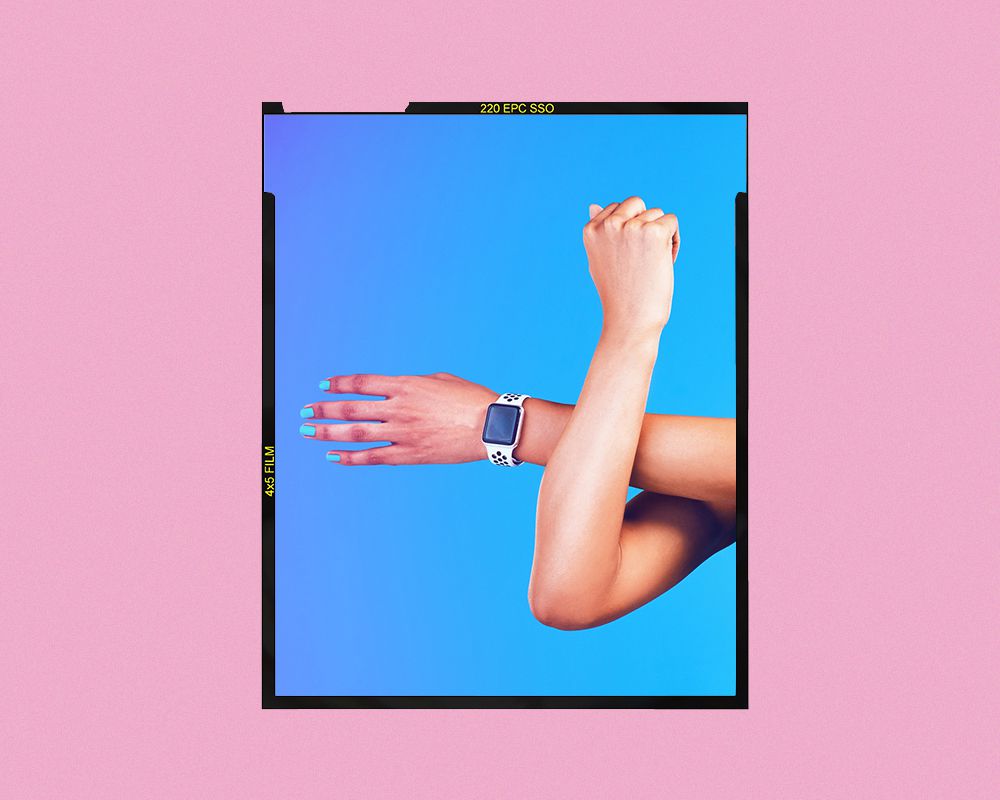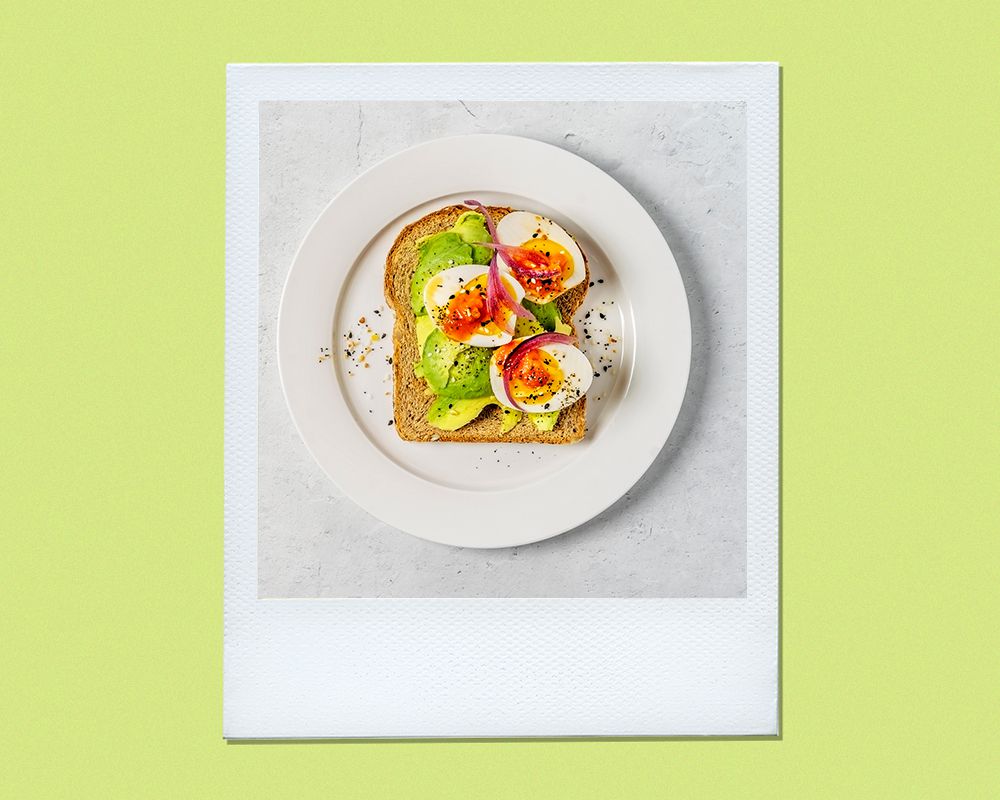Here's How to Deal With Skin Irritation From Your Fitness Tracker

It’s finally summer, which means sunshine, swimming, and sweat. And while the warm weather is nice, it can lead to some skin problems you don’t often encounter during the colder seasons. Take your fitness tracker, for example: Sweat, salt, and more can collect under your wristband to cause heat rash and other irritation that can be less than pleasant when you just want to get your tan on. To help you deal with uncomfortable skin symptoms, Byrdie talked to two dermatologists about how to handle your Apple Watch irritation.
Meet the Expert
- Natalie Aguilar, RN, is a dermatological nurse and celebrity aesthetician.
- Elizabeth Bahar Houshmand, MD, is a double board-certified dermatologist based in Dallas.
Why Fitness Trackers Can Cause Skin Irritation
Fitness trackers can cause irritation for a variety of reasons, according to dermatological nurse and celebrity aesthetician Natalie Aguilar, RN. One common culprit for that wrist rash? Wearing the band too tight, she says. A tight band creates friction against your skin, which is bound to cause some irritation if it’s rubbing up against your wrist all hours of the day, she explains.
Never taking breaks from wearing your tracker is another recipe for skin irritation, according to Aguilar. The underbelly of your watch face and band is the ideal warm, dark, and humid environment for bacteria to flourish, which she says can mess with your skin and sometimes even lead to infection. You probably also wear your tracker while you get sweaty during exercise, and she says that added moisture can further aggravate tender skin and cause a heat rash. “Our skin was designed to protect our body from foreign materials and invaders like bacteria,” she tells Byrdie. “So when an item is constantly creating friction, the acid mantle of the skin is disrupted, making the skin even more sensitive to metals, leathers, and plastics.”
And sometimes skin irritation is due to a full-blown allergy, adds Houshmand. Some fitness trackers are made with nickel, a material that she says commonly causes an allergic condition called contact dermatitis. Many tracker straps also contain trace amounts of acrylates and methacrylates, which she says can also cause an allergic reaction.
How to Prevent Irritation From Your Fitness Tracker
The simplest solution? Give your skin a break from your fitness tracker, says Houshmand. Don’t wear it every day, and if you must, make sure to give your skin some time to breathe. Aguilar also advises against wearing the band too tight against your skin to prevent any unnecessary rubbing. If you can’t bear to part with your tracker, she suggests switching off wrists every day to minimize the chances of a rash forming.
On a similar note, Aguilar cautions against wearing your tracker while bathing or swimming to prevent the skin under your watch from growing too moist. The same goes for excessive sweating—if you notice yourself getting a little too drippy, she suggests ditching your wearable until after your skin is dry again. If you have to keep wearing it, she has a pro tip: “A little dust of cornstarch under the watch plate works wonders [to] absorb moisture and soothe skin.”
Regularly cleaning your skin and wearable can also help stave off the potential for skin irritation, adds Aguilar. That way both surfaces stay as dry and bacteria-free as possible to mitigate any risk of infection. Houshmand likewise recommends protecting your skin’s moisture barrier, which, when in balance, helps hold in the good stuff (like hydration) and fend off the bad stuff (like bacteria). “Irritants actually remove moisture from the outer layer of skin, which allows them to go deeper into the skin and cause inflammation,” she tells Byrdie. “Look for moisturizers that include lipids and ceramides. These ingredients are vital to maintaining skin barrier integrity.”
How to Treat Irritation From Your Fitness Tracker
Hopefully those preventive measures ensure that you don’t have to deal with skin rashes in the first place. But if your irritation goes from bad to worse, there are a few things you can do to remedy it, says Aguilar. The most obvious? Don’t wear the tracker, she says. If your skin doesn’t come into contact with the irritant, then it won’t get more irritated.
Once you’re tracker-free, she says to wash the affected area with warm soap and water. If you’re looking for rash relief, she suggests applying a small amount of over-the-counter 1% hydrocortisone, calamine lotion, or antihistamine cream, all of which can calm uncomfortable itchiness. Houshmand also recommends wiping Vaseline over your troubled skin for some added protection while you heal. Continuing to wash and soothe the area for three to five days should do the trick, according to Aguilar.
If you suspect allergies are to blame for your skin woes, Houshmand says it’s wise to get to the bottom of your rash so you can avoid it in the future. Check in with your dermatologist about getting a skin allergy test to determine if nickel or another material is the source of your discomfort.
When to See a Dermatologist
If your skin irritation doesn’t clear up on its own after a few days despite taking measures to treat it, then it’s time to head to the dermatologist, says Aguilar. If your rash appears suddenly, starts to spread, or you develop blisters or oozing, then head to the derm straight away, adds Houshmand. These could all be signs that you’re dealing with a bacterial or yeast infection and need professional help, explains Aguilar.
The Takeaway
Skin allergies or wearing your fitness tracker for too long or too tight can all contribute to irritation in the area. Luckily, you can prevent discomfort by taking regular breaks from wearing your tracker and keeping the area clean and dry. But if your skin troubles escalate and you need to deal with an itchy rash or unpleasant inflammation, ditching your watch and applying soothing anti-itch creams, moisturizers, and protective barriers like Vaseline can help your skin get back to baseline. However, if your symptoms don’t clear up within a few days of taking those measures, it’s time to book an appointment with your dermatologist.
The 12 Fitness Trackers That Will Help You Level Up Your Workout Routine







